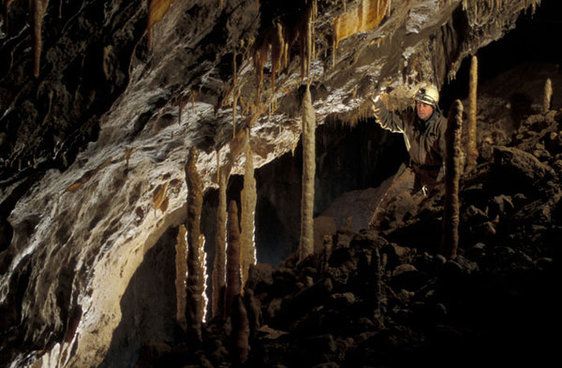On the afternoon of 28th of August 2023, the Bakonyi Cave Rescue Service started a cave rescue mission.
Caves are not only natural values that must be protected due to their non-renewable formations or fragile ecological balance, but they can also hide valuable archaeological sites, which can open a window to the world of the bygone past for knowledgeable specialists. A few months ago, the researchers of the Csodabogyós cave at Balatonederic discovered some unexpected interesting findings. They found unusual remains of bones and teeth in the debris near the entrance of the cave. The cave explorers invited paleontologists, geologists and archaeologists to the cave, who began the methodical and scientific exploration of the site, hoping to learn more about the small vertebrates that lived in the Miocene age.
Yesterday, during the field work in the cave, a member of the MTA-MTM Paleontological Research Group fell ill. Late in the afternoon, during the work underground, a lady researcher suddenly fell ill and - although the she was near the entrance - it seemed clear that she would not be able to leave the cave without assistance.
In the Csodabogyós cave, adventure tours with overalls regularly take place, so the organizers of the tours keep a few closed cell foam matrasses and sleeping bags in the cave for safety reasons, so that, if necessary, they can delay the cooling down of tired or possibly injured cavers.
The executive explorer of the cave, who was on site, immediately started to create protection against cold from this safety reserve, and then alerted the Hungarian Cave Rescue Service. Of course, we immediately forwarded the alarm to the nearby Bakonyi Cave Rescue Service, which works in close cooperation with us, and they could get to the scene sooner.
They set off for the cave with 14 cave rescue members and an emergency ambulance nurse, meanwhile at the same time the Hungarian Cave Rescue Service launched its medical team from Budapest in the direction of Balatonederics. A reserve standby unit was also set up in the case a larger operation was needed.
From the time of the alert to the arrival of the cave rescue service, the companions on the scene managed to improve the condition of the sick researcher using their own resources, so that with great care and support, she could slowly reached the exit of the cave.
At the surface, the intense rain accompanying the cold front that was just passing by was waiting for them, so the members of the cave rescue service helped the tired researchers to the road that can be accessed by car. Afterwards the researcher was transported to the emergency department of the Keszthely hospital for further examinations and treatment.
We hope that after yesterday's illness, we will be able to welcome back the entire research group in a short time, and that they will be able to continue their valuable work, the results of which we may hear an interesting lecture at the next speleological conference.



